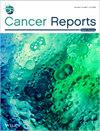Predicting Prognosis and Immunotherapy Response in Glioblastoma (GBM) With a 5-Gene CAF-Risk Signature
Abstract
Background
Cancer-associated fibroblasts (CAF) represent significant constituents within the extracellular matrix (ECM) across a range of cancers. Nevertheless, there exists a scarcity of direct proof concerning the function of CAF in glioblastoma (GBM).
Aims
This study endeavors to probe the participation of CAF in GBM by developing and validating a CAF-risk signature and exploring its correlation with immune infiltration and immunotherapy responsiveness.
Methods and Results
To fulfill these objectives, mRNA expression profiles of GBM samples and their corresponding clinical data were retrieved from two databases. First, stromal CAF-associated genes were identified by weighted gene co-expression network analysis (WGCNA). This method constructs co-expression networks and pinpoints gene modules with similar expression patterns to detect relevant genes. Subsequently, a CAF-risk signature was established via univariate and LASSO Cox regression analyses. Thereafter, gene set enrichment analysis (GSEA) and single-sample gene set enrichment analysis (ssGSEA) were carried out to investigate the underlying molecular mechanisms. The immune status was evaluated with several R packages, and the Tumor Immune Dysfunction and Exclusion (TIDE) algorithm was utilized to assess the response to immunotherapy. Validation was performed using single-cell RNA sequencing (scRNA) datasets, the Cancer Cell Line Encyclopedia (CCLE), and the Human Protein Atlas (HPA). Eventually, a 5-gene (ITGA5, MMP14, FN1, COL5A1, and COL6A1) prognostic CAF model was constructed. Notably, immune infiltration analysis demonstrated a significant correlation between Treg, Macrophage, and CAF risk scores. Moreover, TIDE analysis suggested a decreased responsiveness to immunotherapy in high CAF-risk patients. In addition, GSEA showed significant enrichment of the transforming growth factor alpha (TGF-α), inflammatory response, and epithelial–mesenchymal transition (EMT) pathways in this subgroup. Finally, the validation through scRNA, CCLE, and HPA datasets confirmed these findings.
Conclusion
The 5-gene CAF-risk signature exhibited accurate prognostic predictions and efficiently evaluated clinical immunotherapy responses among GBM patients. These results offer robust evidence regarding the implication of CAF in GBM and underscore the potential clinical value of personalized anti-CAF therapies in conjunction with immunotherapy.


 求助内容:
求助内容: 应助结果提醒方式:
应助结果提醒方式:


